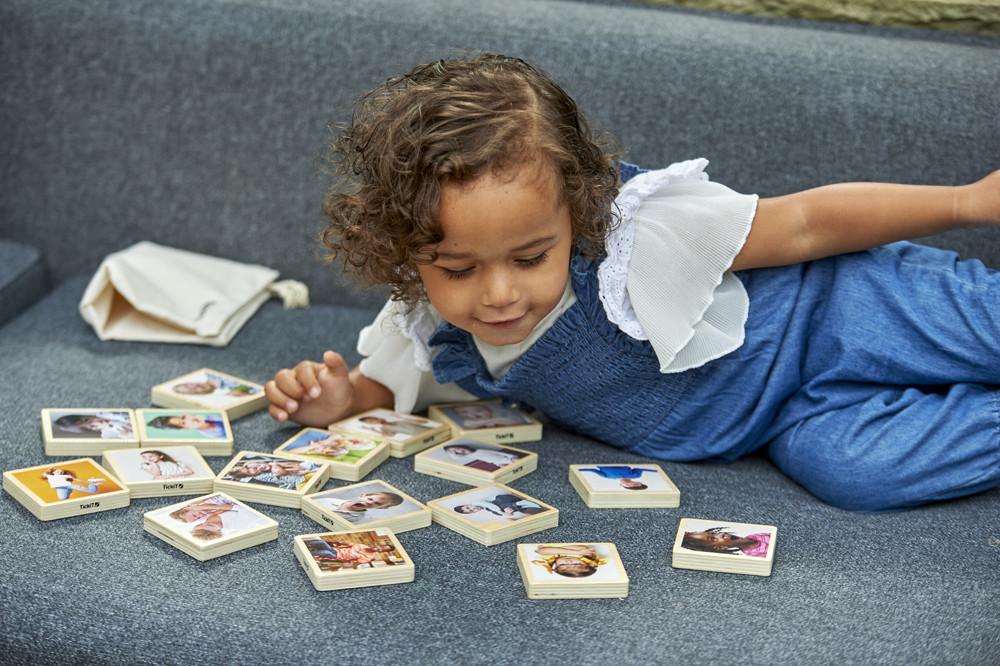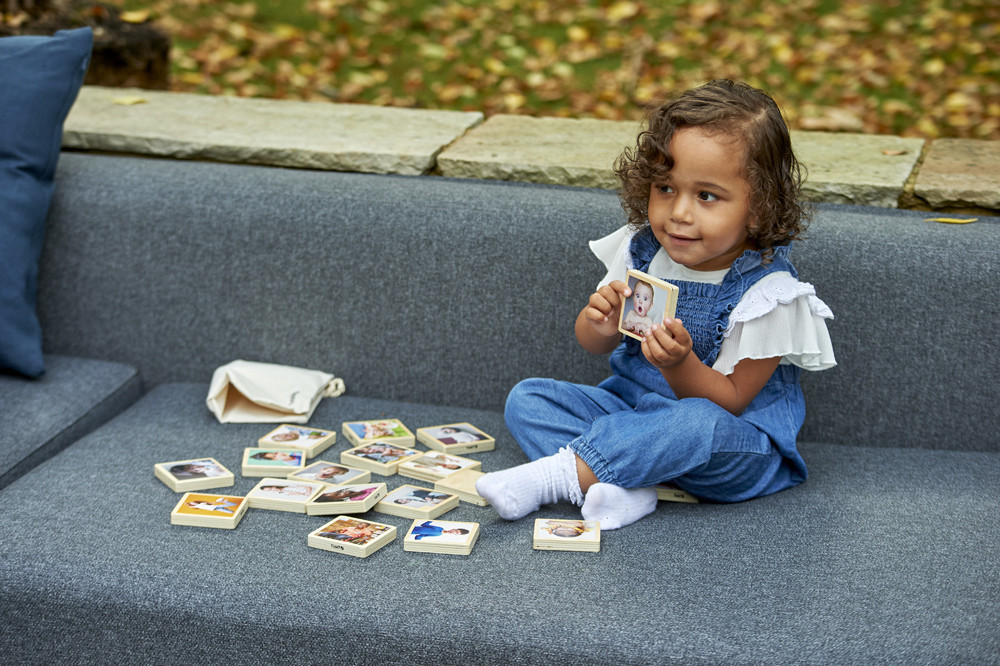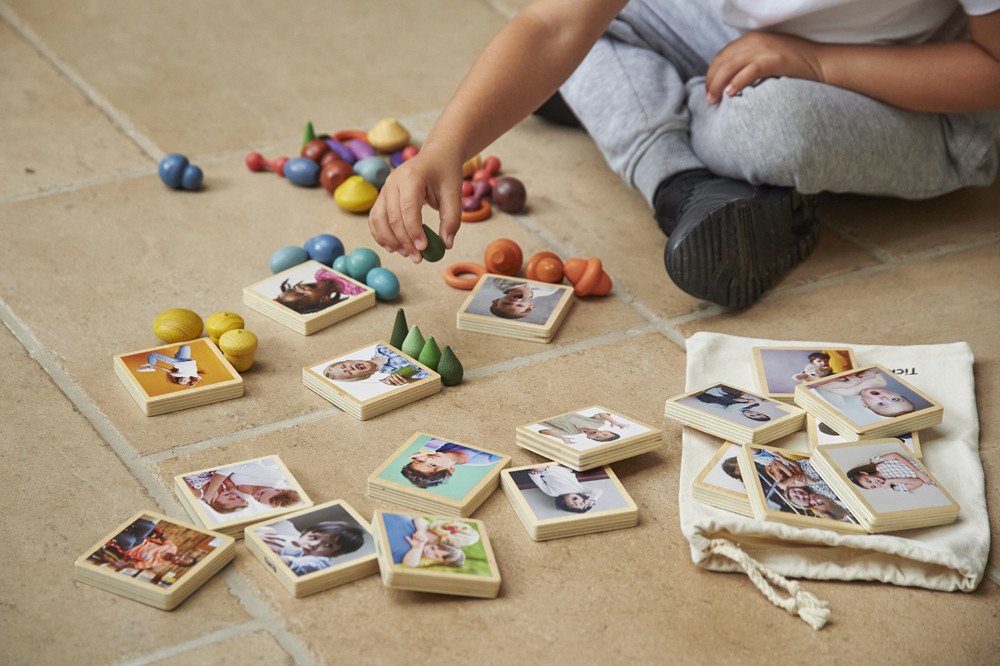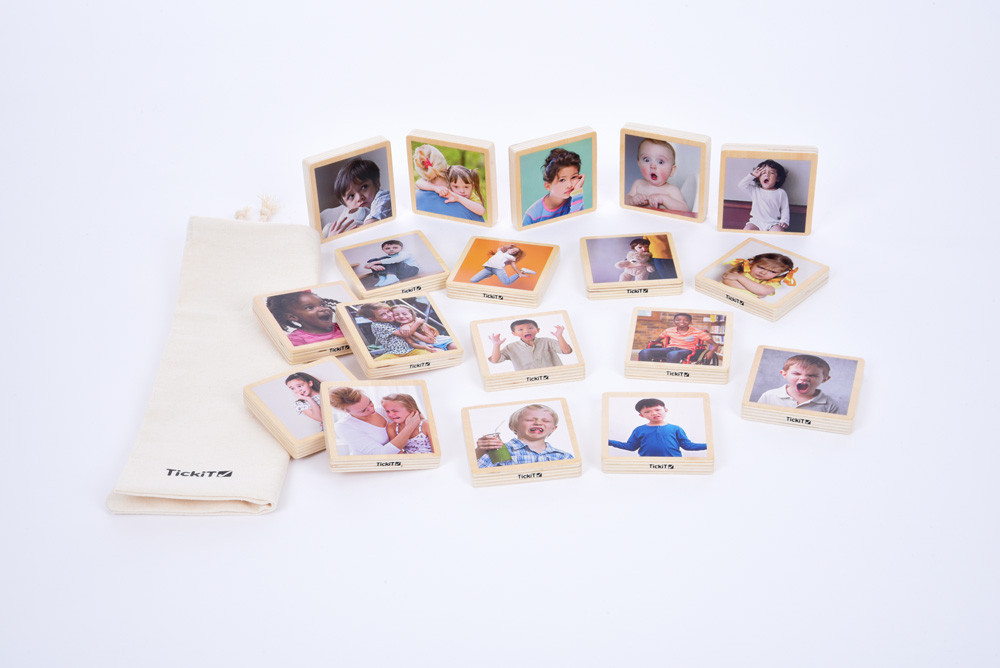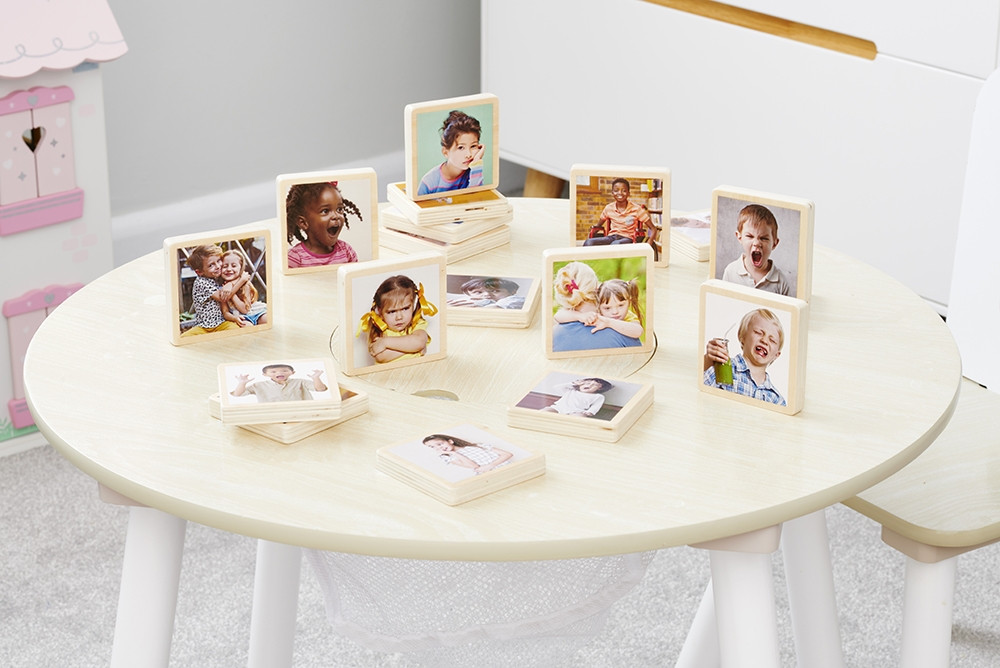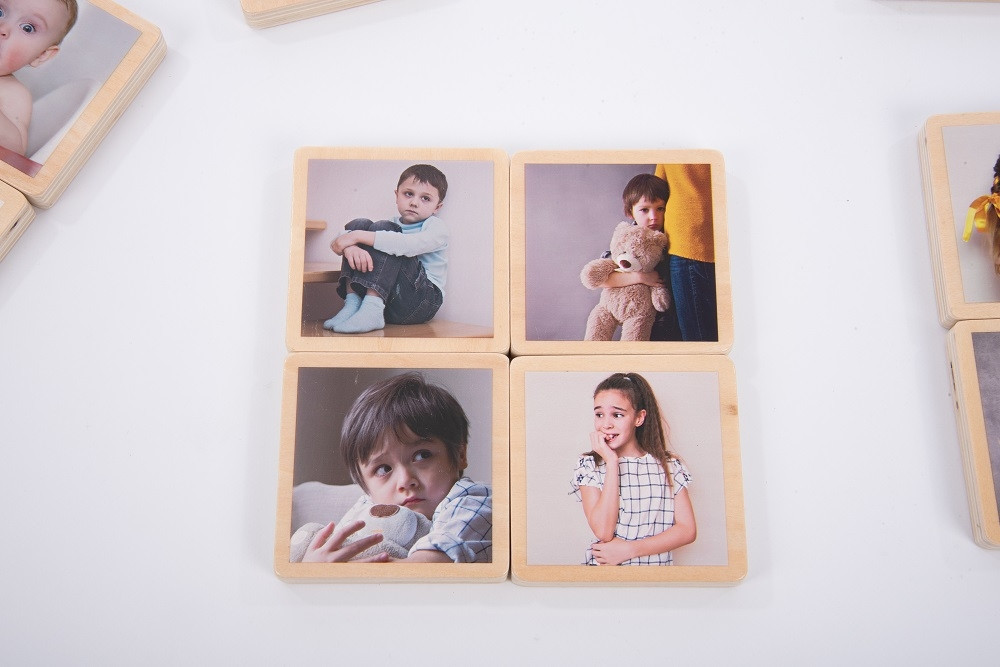My Emotions Wooden Tiles come as a beautiful set of 18 chunky wooden tiles that show real photo images of children showcasing different emotions and reactions.
Rachel Comfort, a primary school teacher, has used these in her lessons. We contacted her to gain her feedback on the set.
I am extremely excited to write about these beautifully crafted wooden tiles. All too often resources such as these are placed within an early years' environment with the intention of teaching young children either to understand the emotion on the tile or relate one of these emotions to their own mood. However, there is so much more this resource can achieve, and across a far wider age range.
Having worked across Early Years (under 5 years), Key Stage 1 (ages 5-7 years), and Key Stage 2 (7-11 years), I see the gradual reduction in concrete resources within a classroom. Instead, the expectation is for children to be able to draw on their long-term memory of a given subject. However, now more than ever, our children are demonstrating bigger gaps in their emotional intelligence. Instead of passing the blame for this on the pandemic, why aren’t we giving children the tools they need to develop the skills they need to survive and thrive in an ever-changing and challenging world?
I could come up with many ideas of how I would use this resource in my Year 4 classroom (8-9 years). I would love to plan a whole term’s Personal, Social, Health and Economic lessons exploring each tile and what the children think the model is feeling, why they are feeling that way? and what could cause a person to feel that emotion? This could lead onto what a person could do next. Do they want to change the way they are feeling? Do they need to change the way they are feeling? I recently attended a course run by an NHS Emotional Wellbeing Practitioner. They trained me to teach children that feeling a wide range of emotions is normal and should not be discouraged. All emotions are valid. However, identifying the emotion is vital in understanding whether, or not, the person feeling the emotion wishes to change it.
Many emotional well-being programs are designed to elicit a conversation about feelings. The images, often accompanied by words, lead children to choose an emotion and say that is how they are feeling. I remember as a child I would always associate my “low mood” to missing my grandmother. In fact, I didn’t know why I felt sad, but I did know that it was acceptable to cry about a person who had died. I also knew that if I didn’t give a reason for my mood, I would be interrogated and pressured in to attributing another reason for being sad. When really, I think I sometimes just felt sad. As an adult, I now know that that is ok, and no one can force me to attribute a meaning to it. I strongly believe this is a skill we need to evoke in our young children. That is not to say we don’t care why they feel a certain way and of course we, as parents, carers, teachers, and other educational staff, need to identify when patterns occur in a child’s mood. But for the short term, just being able to identify an emotion and share it with another person is a great start to becoming emotionally intelligent.
In my classroom I see this as being possible by having the My Emotions Wooden Tiles readily accessible for a child to either hand to myself or one of their friends to show how they are feeling. They would be a fantastic tool as a morning, after break, after lunch and before the end of the day check-in. Children could point or turn over the tile they most relate to. Even if all I have time to do is acknowledge their feelings, I then have the knowledge to act upon as soon as I can. But more importantly, the child has been able to share, if they want to.
Just think of the additional opportunities having a resource such as this in the classroom opens for children to talk to their peers about emotions too. Naturally as an adult working within a school, I feel it is my responsibility to look out for each child’s wellbeing, and to an extent it is. But children helping other children is invaluable and the natural order of development into young adulthood.

